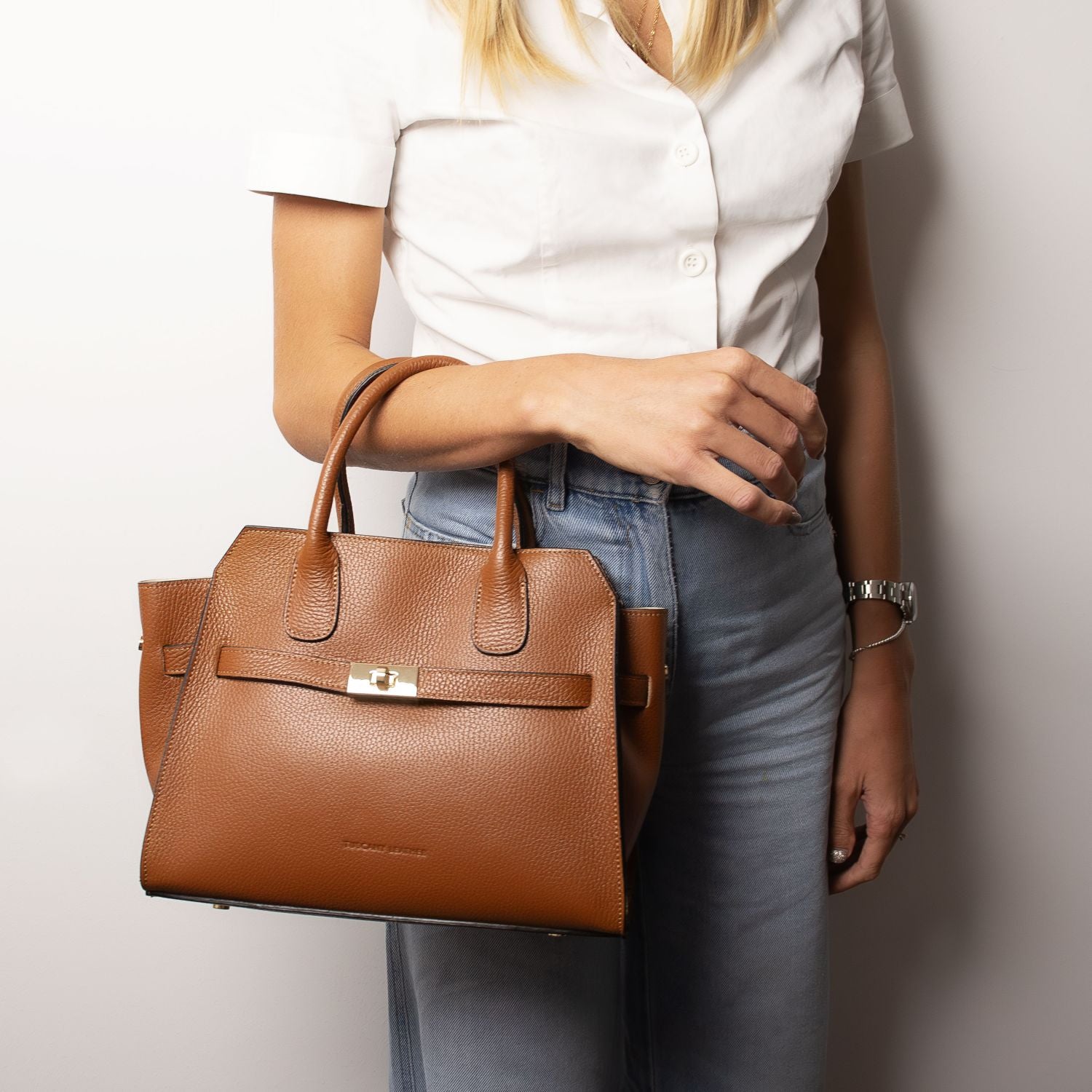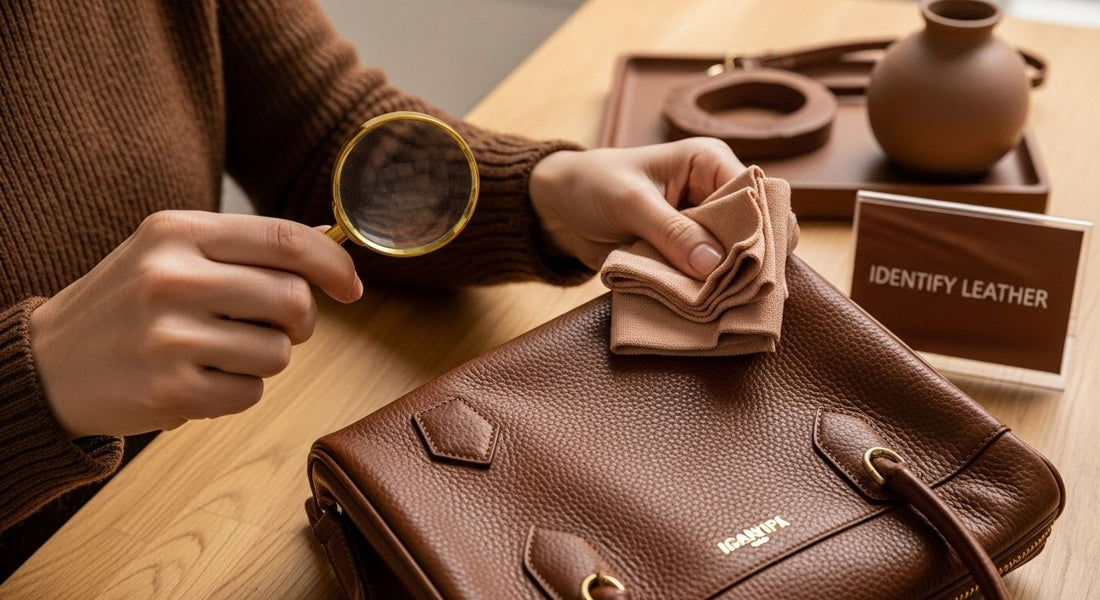
How to Care for Leather Bags: A Complete Guide for Longevity
Share
Spotting a genuine leather bag can feel like trying to solve a mystery. Full grain leather reveals its true character with unique marks, subtle texture, and natural variations that cheap imitations simply cannot fake. Yet most people look for shiny, uniform surfaces and end up picking the wrong bag. The real secret? Only those details that many ignore are the clues to finding and caring for leather that lasts for decades.
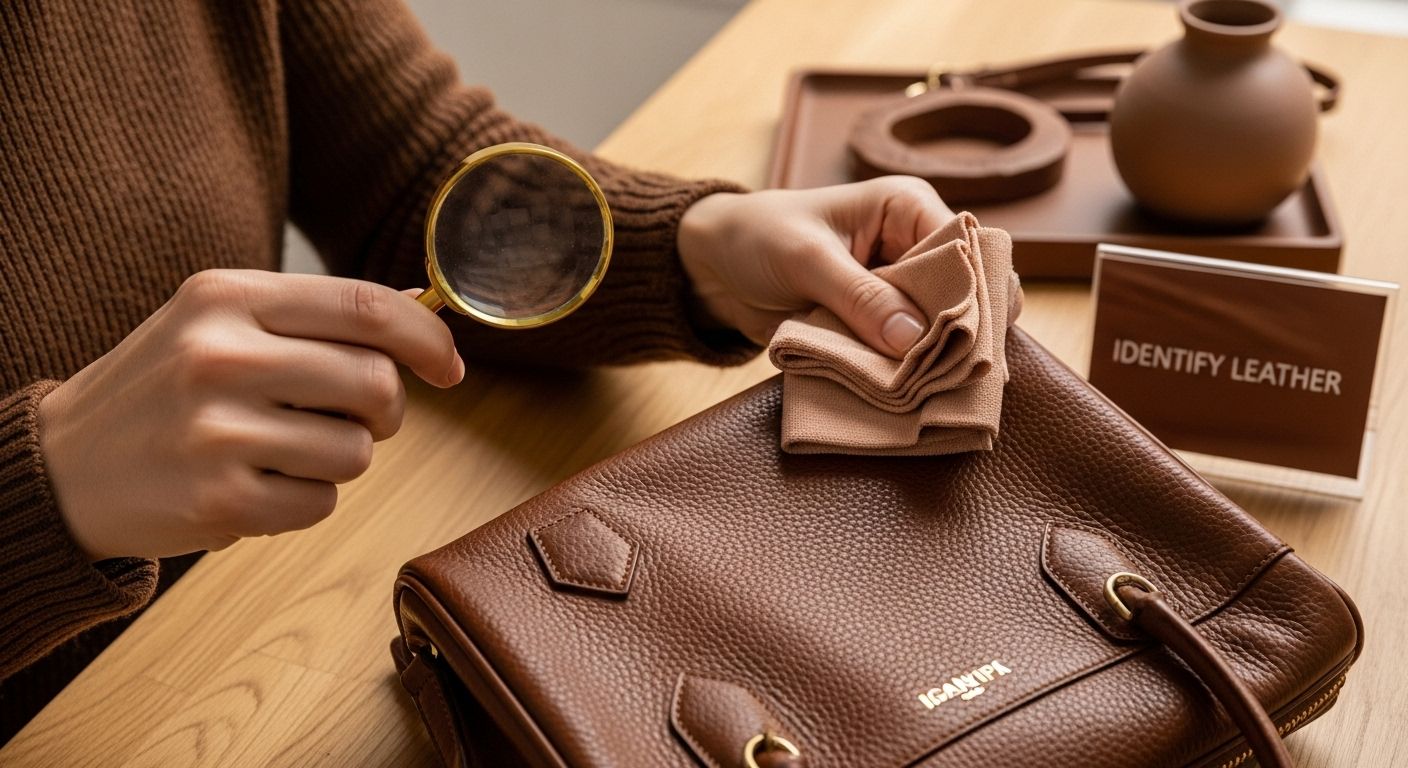
Table of Contents
- Step 1: Identify The Type Of Leather Used
- Step 2: Gather Appropriate Cleaning Supplies
- Step 3: Clean And Condition The Leather
- Step 4: Protect Your Leather From Damage
- Step 5: Store Properly For Longevity
Quick Summary
| Key Point | Explanation |
|---|---|
| 1. Identify your leather type first | Understanding your leather type ensures appropriate care, preventing damage from improper maintenance methods. |
| 2. Use the right cleaning supplies | Employ soft, lint-free cloths and pH-neutral cleaners to protect and preserve the leather’s natural oils. |
| 3. Clean and condition regularly | Regular cleaning with proper techniques nourishes the leather, maintaining its sheen and preventing cracking. |
| 4. Protect against environmental damage | Store your leather bag away from sunlight and moisture, avoiding distortion and degradation of the material. |
| 5. Properly store for longevity | Use breathable dust bags and tissue to maintain shape and prevent wear; rotate bags to ensure even care. |
![]()
Step 1: Identify the Type of Leather Used
Before diving into leather bag care, understanding the specific type of leather is crucial for developing an appropriate maintenance strategy. Different leather types require nuanced care approaches, and misidentifying your bag’s material could lead to unintended damage.
Leather identification begins with a careful visual and tactile examination. Full grain leather, the highest quality leather, will display natural markings and imperfections that tell a unique story. Subtle grain patterns, slight color variations, and a rich, supple texture are hallmarks of authentic, premium leather. By contrast, synthetic or heavily processed leathers often appear unnaturally smooth and uniform.
According to research published by the Journal of the American Leather Chemists Association, professional leather experts utilize advanced techniques to distinguish leather origins, but home identification can be equally effective with careful observation. Start by examining your bag under good lighting, running your fingers gently across the surface to feel its texture and resilience.
Key characteristics to assess include leather thickness, flexibility, and surface finish. Soft, naturally textured leather typically indicates full grain or top grain quality, while stiff or overly uniform surfaces might suggest lower-grade materials. Pay attention to how the leather responds to gentle pressure - premium leather will develop a subtle sheen and maintain its structural integrity.
For precise identification, consider these verification methods:
- Check the manufacturer’s documentation or label inside the bag
- Contact the original retailer or brand for specific leather type details
- Consult a professional leather specialist for definitive classification
Remember that accurate leather identification is the foundation for developing a targeted care routine. By understanding your bag’s specific leather characteristics, you’ll be equipped to select appropriate cleaning products, conditioning techniques, and preservation strategies that maintain its beauty and longevity.
Step 2: Gather Appropriate Cleaning Supplies
Preparing the right cleaning supplies is a critical step in maintaining your leather bag’s pristine condition. Think of this process as assembling a carefully curated toolkit designed specifically to protect and preserve your cherished accessory. Not all cleaning products are created equal, and using the wrong materials can cause irreversible damage to delicate leather surfaces.
Soft, lint-free microfibre cloths form the foundation of your leather care arsenal. These gentle cloths prevent scratching and help distribute cleaning products evenly without leaving residue. Avoid rough towels or paper products that might introduce unwanted texture or microscopic abrasions to your bag’s surface.
According to the Smithsonian Institution’s conservation guidelines, selecting mild, pH-neutral cleaning solutions is paramount. Professional leather specialists recommend dedicated leather cleaners that maintain the material’s natural oils and protective qualities. Harsh household cleaners or generic multi-surface products can strip away essential leather protective layers, leading to premature aging and potential cracking.
Your comprehensive leather care kit should include:
- Soft microfibre cloths (multiple clean ones)
- Specialised leather cleaner formulated for your specific leather type
- Leather conditioner
- Soft-bristled brush for gentle dust removal
- Clean, distilled water
- White vinegar (for emergency spot cleaning)
Storage matters as much as the supplies themselves. Keep your cleaning materials in a cool, dry location away from direct sunlight and extreme temperatures. Moisture and heat can degrade cleaning product effectiveness and potentially introduce unwanted bacteria or mould into your carefully curated toolkit.
Here is a summary of essential tools and materials required for cleaning and maintaining your leather bag. This table helps you quickly gather everything you need for proper care.
| Item | Specification | Purpose |
|---|---|---|
| Soft microfibre cloths | Lint-free, multiple clean ones | Removes dust, applies cleaners/conditioners |
| Leather cleaner | pH-neutral, formulated for leather type | Cleans dirt and residues, protects natural oils |
| Leather conditioner | High-quality, suited to leather type | Nourishes and protects the leather |
| Soft-bristled brush | Gentle, small size | Removes dust from crevices and seams |
| Distilled water | Clean, room temperature | Spot cleaning and dilution |
| White vinegar | For emergency spot cleaning (diluted) | Treats tough stains and quick clean-ups |
Before beginning any cleaning process, perform a small spot test on an inconspicuous area of your leather bag. This preliminary check ensures the cleaning products interact safely with your specific leather type, preventing potential discolouration or damage. Patience and gentle application are key when working with fine leather accessories.
Remember that investing time in gathering the right supplies is an investment in your leather bag’s longevity. By approaching leather care with thoughtfulness and precision, you’ll ensure your treasured accessory remains beautiful and functional for years to come.
Step 3: Clean and Condition the Leather
Cleaning and conditioning your leather bag transforms routine maintenance into an art form of preservation. This crucial step goes beyond surface-level cleaning, creating a protective barrier that nourishes the leather and extends its lifespan. Think of it as providing a rejuvenating spa treatment for your cherished accessory.
Begin by creating a clean workspace with ample natural light. Lay out a soft, clean towel and position your leather bag carefully to ensure complete access to all surfaces. Gentle, deliberate movements are key to preventing accidental scratches or unnecessary stress on the leather.
According to the University of Georgia Extension, leather conditioning is essential for preventing drying and cracking. Start with a light, circular motion using a clean microfibre cloth to remove surface dust and minor debris. Apply a small amount of specialized leather cleaner directly to the cloth, never onto the bag itself. This controlled application prevents oversaturation and potential damage.
Work in small sections, using minimal moisture and soft, consistent strokes. Pay special attention to areas of frequent contact like handles and corners, where dirt and oils tend to accumulate. Be patient and methodical, allowing each section to dry naturally before moving to the next. Avoid rubbing aggressively, which can damage the leather’s delicate surface.
After cleaning, conditioning becomes your leather bag’s protective shield. Choose a high-quality leather conditioner specifically designed for your leather type. Apply sparingly using a clean, soft cloth, working the product into the leather with gentle, circular motions. The goal is to create a thin, even layer that moisturizes without leaving a greasy residue.
Key indicators of successful cleaning and conditioning include:
- Restored natural leather sheen
- Soft, supple leather texture
- Even color distribution
- No visible residue or streaking
- Leather that feels nourished but not overly saturated
Allowing the conditioner to absorb fully is crucial. Place the bag in a cool, dry area away from direct sunlight or heat sources. Give it time to rest, typically an hour or two, ensuring the leather fully absorbs the conditioning treatment. Resist the temptation to rush or handle the bag immediately after conditioning.
This checklist table outlines key indicators to confirm you have successfully cleaned and conditioned your leather bag. Use this as a post-care verification guide.
| Verification Step | What to Check For |
|---|---|
| Natural leather sheen restored | Subtle, even shine |
| Soft, supple texture | Leather feels flexible, not stiff |
| Even colour distribution | No faded or patchy spots |
| No visible residue or streaking | Surface is clear, not sticky |
| Nourished, not saturated feel | Leather is moisturised, not oily |
Remember that leather care is a delicate balance of technique and intuition. Each bag is unique, and what works perfectly for one might require slight adjustments for another. Approach the process with patience, respect for the material, and a commitment to preserving your leather bag’s timeless beauty.
Step 4: Protect Your Leather from Damage
Protecting your leather bag requires a proactive approach that goes beyond simple cleaning and conditioning. This step is about creating a comprehensive defense strategy that shields your treasured accessory from potential environmental and physical threats. Thoughtful prevention is always more effective than reactive repair.
Storage plays a critical role in leather preservation. Choose a cool, dry location away from direct sunlight and extreme temperature fluctuations. Avoid hanging your bag, which can distort its natural shape. Instead, store it upright on a shelf or in a dust bag, stuffed lightly with acid-free tissue paper to maintain its structural integrity. This simple practice prevents unnecessary stretching and helps the bag retain its original form.
According to The Military Horse, periodic inspection is crucial for identifying potential damage early. Regularly examine your bag for signs of wear, paying close attention to stress points like handles, corners, and attachment areas. Early detection can prevent minor issues from becoming major problems.
Environmental protection requires strategic planning. Keep your leather bag away from direct heat sources, radiators, and prolonged sunlight, which can cause fading and dry out the leather. Humidity is equally dangerous - too much moisture can lead to mould growth, while excessive dryness causes cracking. If you live in an environment with significant humidity fluctuations, consider using silica gel packets in your storage area to absorb excess moisture.
Key protective strategies include:
- Use a leather protectant spray designed for your specific leather type
- Avoid exposing the bag to rain or excessive moisture
- Keep the bag away from sharp objects that might scratch
- Rotate usage to prevent excessive wear on a single bag
- Clean spills immediately to prevent staining
When travelling or commuting, use additional protective measures. A soft dust bag or protective cover can shield your leather bag from unexpected bumps, scratches, and environmental pollutants. Be mindful of how you place the bag - avoid setting it on dirty surfaces or rough ground that could compromise its finish.
Verify your protection strategy’s effectiveness by conducting regular visual and tactile assessments. A well-protected leather bag should maintain its color, texture, and structural integrity. If you notice any changes, reassess your protection methods and make necessary adjustments. Remember, protecting your leather bag is an ongoing commitment that requires attention and care.
Step 5: Store Properly for Longevity
Proper storage transforms leather bag preservation from a periodic task into a comprehensive preservation strategy. The final step in leather care is about creating an optimal environment that protects your investment and maintains its pristine condition. Your storage approach matters as much as your cleaning routine.
Begin by selecting the right storage location. Choose a cool, dry area away from direct sunlight, heating vents, and humidity-prone spaces like bathrooms or basements. Temperature and moisture are leather’s greatest enemies, capable of causing irreversible damage such as mould growth, leather degradation, and structural deformation.
According to BestLeather.org, storing your leather bag requires meticulous attention to detail. Use a breathable, soft dust bag made from natural fabrics like cotton that allows air circulation while protecting against dust and environmental pollutants. Avoid plastic storage containers, which trap moisture and can create a breeding ground for mildew.
Preparing your bag for storage involves more than simply placing it on a shelf. Stuffing the bag with acid-free tissue paper helps maintain its structural shape, preventing unwanted creasing or sagging. Pay special attention to handles and straps, ensuring they remain upright and unstressed. If possible, store bags individually to prevent accidental abrasion or pressure marks from adjacent items.
Storage essentials for leather bag preservation:
- Use breathable dust bags or cotton covers
- Stuff bags with acid-free tissue paper
- Keep bags away from direct sunlight
- Maintain consistent, moderate room temperature
- Avoid hanging bags, which can distort their shape
- Place silica gel packets nearby to control moisture
Rotate your leather bags periodically, even during storage. This practice prevents prolonged pressure on specific areas and allows the leather to rest and maintain its natural flexibility. If you have multiple leather bags, create a rotation schedule that ensures each bag receives equal care and attention.
Verify your storage strategy’s effectiveness through regular inspections. A well-stored leather bag should maintain its original shape, color, and suppleness. Look for any signs of unexpected wear, discoloration, or structural changes. Should you notice any issues, immediately reassess and adjust your storage approach.
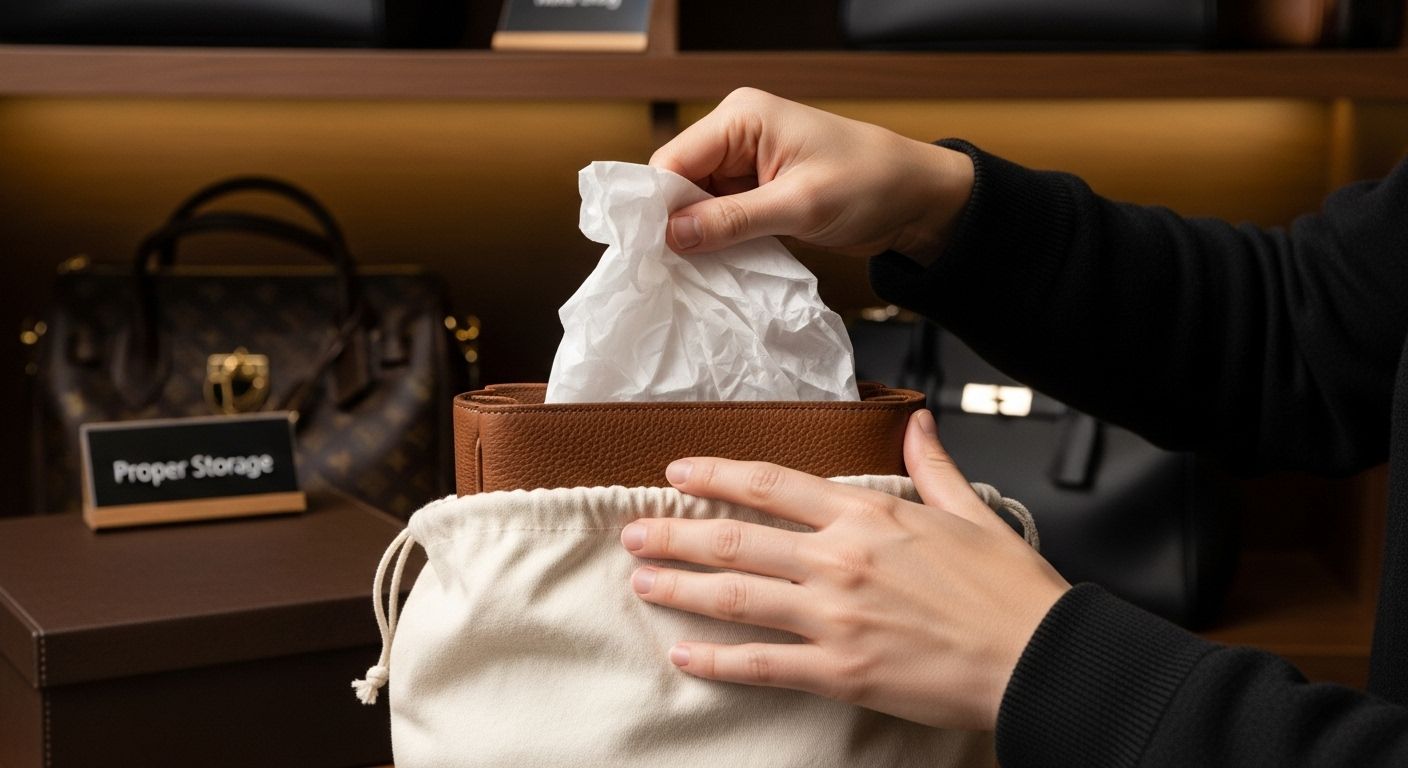
Remember, storing your leather bag is an art form that requires patience, attention to detail, and a genuine appreciation for the craftsmanship of fine leather accessories. Your thoughtful approach will ensure your bag remains a cherished piece for years to come.
Discover Timeless Care for Your Leather Handbag
After learning how vital it is to identify your leather type, use the right products, and store your bag with utmost care, you may still worry about how to preserve that ageless beauty over time. You have seen how premium leather needs specific attention and that only proper, dedicated routines protect your most cherished possessions from fading, wear, or cracking. If you are committed to the longevity of your leather, you need accessories crafted to the highest standards as well as expert support when you need it most.
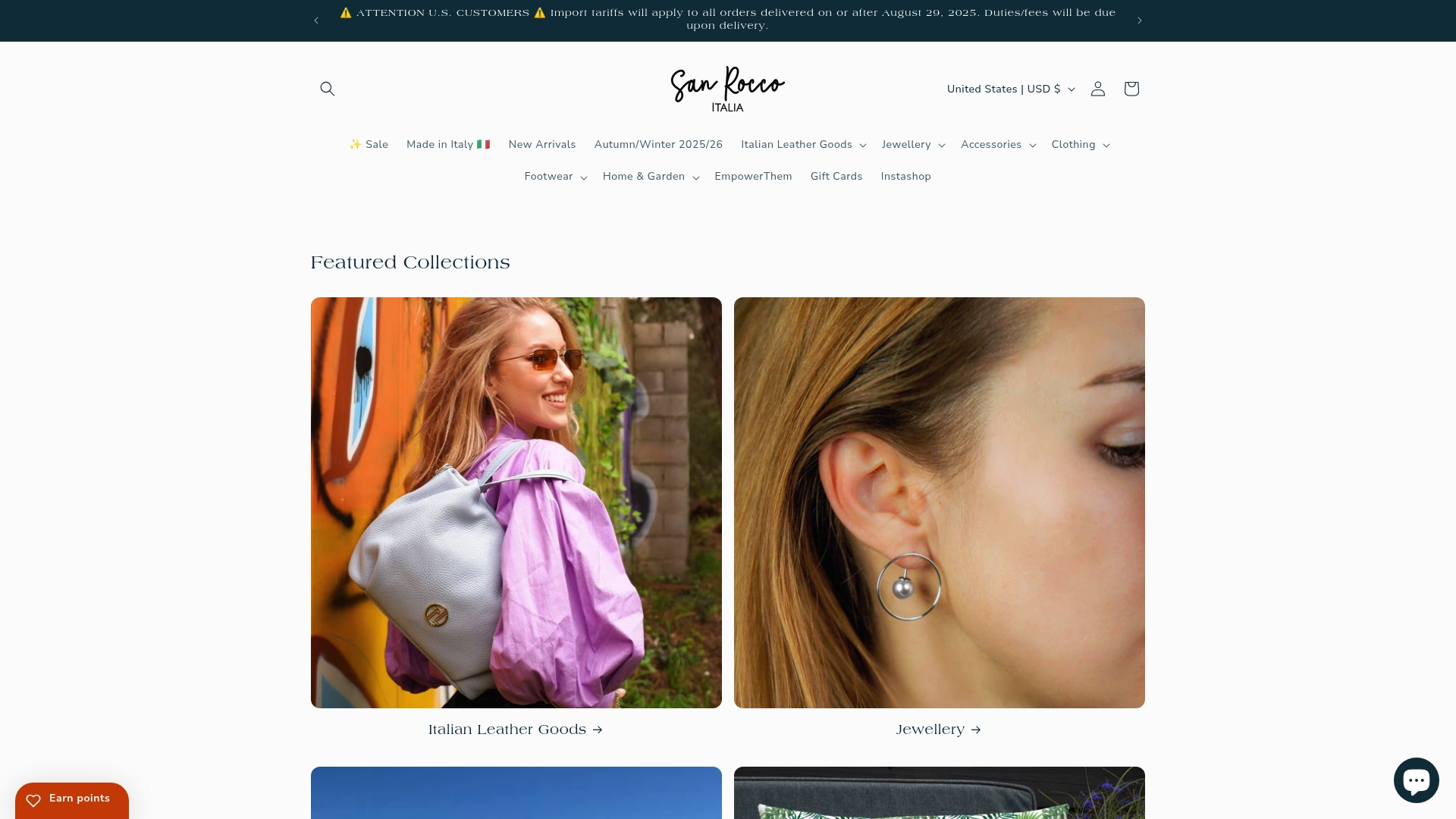
Experience the unmistakable craftsmanship found in every item at San Rocco Italia, where each handbag is created using genuine full-grain leather by expert Italian artisans. Explore our collection of luxury handbags and leather goods, thoughtfully designed to last a lifetime so you can carry your confidence wherever you go. Visit our main site now to discover curated care tips, connect with our team, and choose a masterpiece made to be treasured. Give your leather the exceptional care it deserves today at San Rocco Italia.
Frequently Asked Questions
What type of leather is my bag made of?
Identifying the type of leather is crucial for proper care. Examine your bag under good lighting, feeling its texture, and checking for natural markings. Full grain leather is high quality and displays unique imperfections, whilst synthetic leathers are often uniform and smooth.
How do I clean and condition my leather bag?
Start by using a soft, lint-free microfibre cloth to remove surface dust. Apply a mild pH-neutral leather cleaner on the cloth, never directly on the bag. After cleaning, use a high-quality leather conditioner to nourish the leather, applying it evenly with gentle circular motions.
What are effective ways to protect my leather bag from damage?
Store your leather bag in a cool, dry location away from direct sunlight and humidity. Use a leather protectant spray designed for your specific leather type, avoid exposing it to rain, and inspect it regularly for signs of wear.
How should I store my leather bag for longevity?
Store your leather bag in a breathable dust bag or cotton cover, stuffed with acid-free tissue paper to maintain its shape. Keep it away from sunlight and heat, and rotate usage to prevent excessive wear on a single bag.
